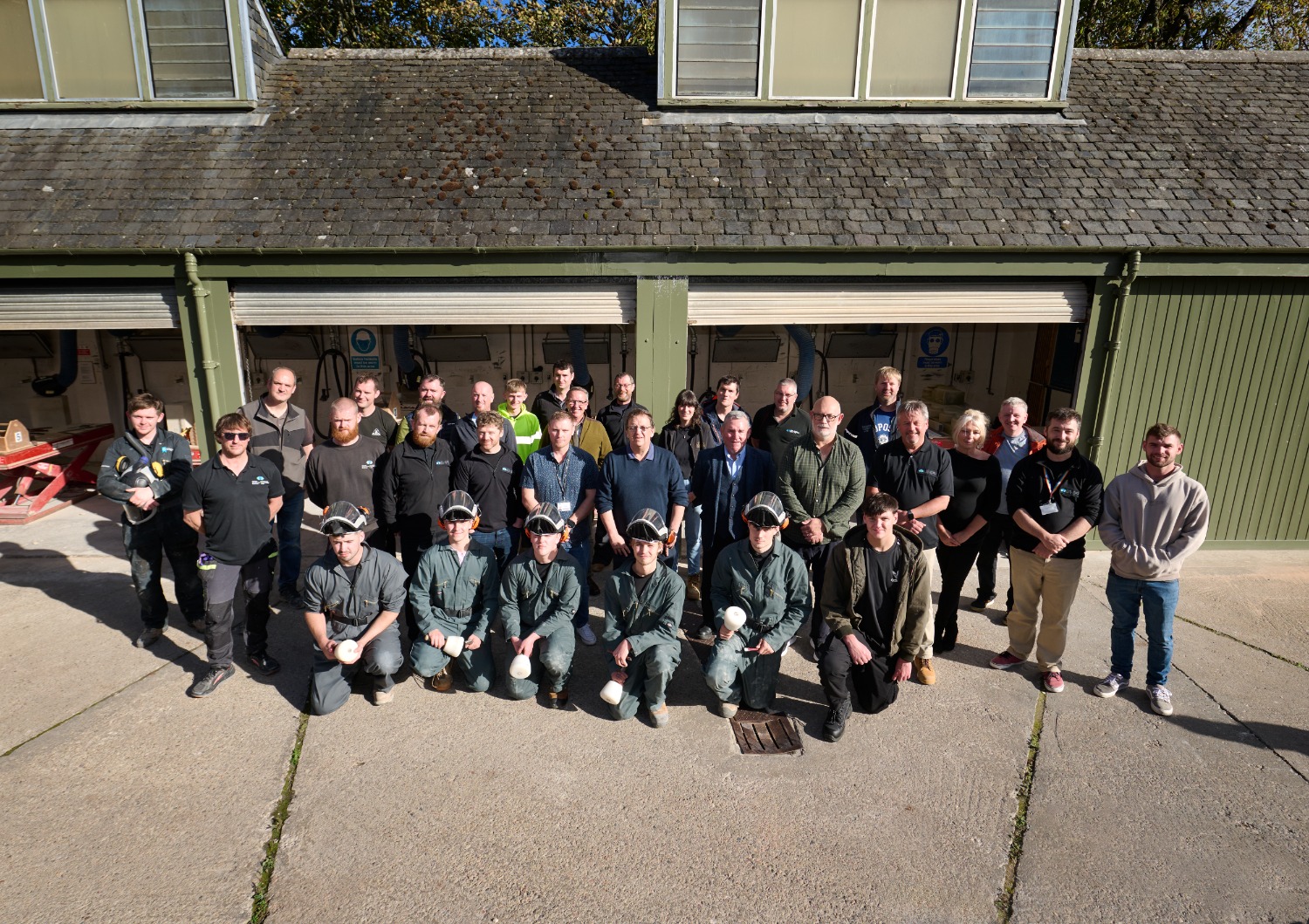
HISTORIC Environment Scotland’s (HES) Elgin Skills Training Centre is to mark 25 years of traditional skills training.
The centre, located next to the iconic Elgin Cathedral, has trained 150 stonemasonry apprentices since opening in 1999.
Traditional stonemasonry lies at the heart of Scotland’s historic environment, from iconic monuments and heritage sites to homes, schools, high streets, and other everyday buildings. Around 20% of homes were built before 1919, and up to 80% of structures that will still be in use by 2050 are already standing today.
HES explained the need for more apprentices has ‘never been greater’, as skilled tradespeople are essential to maintain and adapt these buildings, and also to support sustainable construction, green jobs, and thriving local economies.
The centre was established to fill a gap in northern Scotland after the closure of a stonemasonry course in Aberdeen, which meant apprentices between 1993 and 2000 had to travel to Glasgow or Edinburgh to complete their training.
The late Pete Cameron MBE from HES was instrumental in creating the Elgin centre, working closely with Graham Campbell and Alan Cormie who have been with the centre since it opened.
The Elgin centre provides a unique training environment where apprentices learn to dress stone by hand, following techniques honed over millennia – from the Greeks, Romans, and Egyptians to Scotland’s own master masons, who started building Elgin Cathedral in 1224.
Today, the centre continues to teach both banker and fixer stonemasonry routes. Banker masons focus on decorative work, dressing and shaping stone in workshops, while fixer masons specialise in installing stone on-site – from boundary dykes to chimneys and doorways. Apprentices are trained primarily with hand tools.
Currently, 28 students are enrolled across years 1-4 of the programme. Eight are HES apprentices, working across the organisation’s portfolio of 300 historic buildings, while the remaining 20 are employed by stonemasonry, building, or construction firms, many of whom trained at Elgin themselves and are now sending the next generation of apprentices to the centre. HES operates a second skills training centre in Stirling and, along with City of Glasgow College, are the only two providers of these courses in Scotland.
Andrew Beattie of AB Masonry, who trained at the centre, worked for HES before setting up his own Elgin-based business, and now sends his own apprentices to the centre. He said, “The training I received at Elgin gave me the skills and confidence to work across a wide range of projects in the north. After working with HES, I set up my own business, and I’m proud to now send my apprentices to the centre so they can gain the same high-quality training I benefited from. The centre has been crucial for keeping stonemasonry alive in the region, supporting not just heritage projects but also everyday work for homeowners, businesses, and communities.”
The anniversary comes at a time when heritage is playing an increasingly important role in Moray’s local economy, with HES grant-funded projects such as the Forres Conservation and Heritage Scheme also highlighting the value of traditional skills and community-led renewal.
HES plans to expand the centre into the adjoining space currently used by the Monument Conservation Unit. This will allow more apprentices to train simultaneously and give them space to work on multiple mock-up projects.
Graham Campbell, skills training development manager at HES, added, “As we celebrate 25 amazing years of the Elgin Skills Training Centre, we’re proud of the quality of the training, and the enthusiasm and dedication of our staff in passing on these traditional skills. This expansion reflects the growing need for skilled tradespeople across Scotland.
“Traditional skills are not only vital for preserving our historic buildings, they are essential for a sustainable future – creating green jobs, supporting local economies, and ensuring Scotland’s unique heritage is maintained. Today is a celebration of the past 25 years, and here’s to the next 25 years of training the next generation of stonemasons.”









